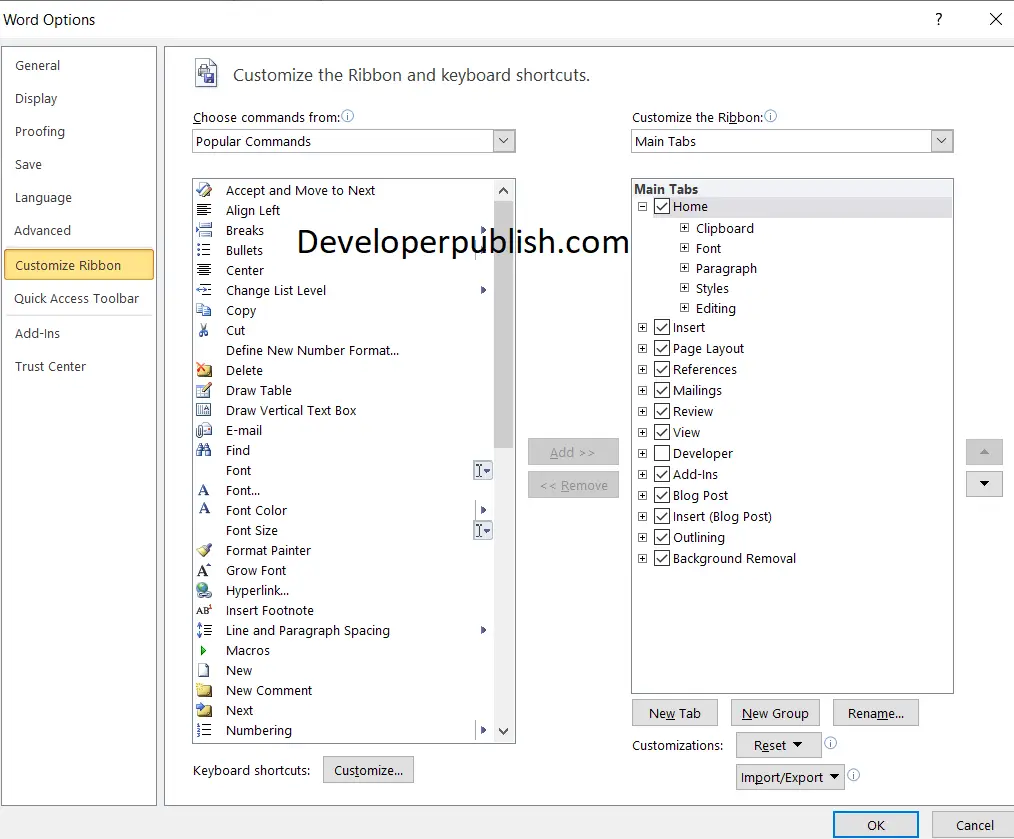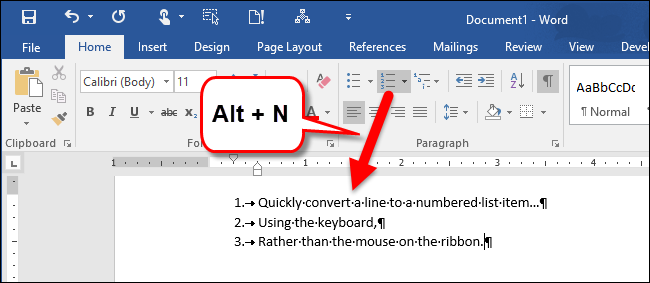

- #MICROSOFT WORD KEYBOARD SHORTCUTS CUSTOMIZE SOFTWARE#
- #MICROSOFT WORD KEYBOARD SHORTCUTS CUSTOMIZE FREE#
Word displays the Customize Keyboard dialog box. Click the Keyboard button at the bottom of the dialog box.Of course, you can also use the Customize dialog box to define an actual keyboard shortcut. Now, when you click the tool, the AutoCorrect dialog box opens and the insertion point is in the Replace box, as desired. Click Close to dismiss the Customize dialog box.Use the mouse to click and drag the AutoCorrect Options command from the list to where you want it on a toolbar.In the Commands list, choose AutoCorrect Options.Right-click on any toolbar and choose Customize from the resulting Context menu.

It isn't a keyboard shortcut, but it places the desired dialog box only a single click away. Thus, the three keystrokes will always take you right to the place you need in order to define new AutoCorrect entries.Īnother option is to create your own AutoCorrect tool for the toolbar. Even though it has multiple tabs, it always displays the AutoCorrect tab whenever the dialog box is displayed, regardless of what was previously displayed in the dialog box. This is apparently not a problem with the AutoCorrect dialog box, however. If your goal is to always display the AutoCorrect tab of the AutoCorrect dialog box (so that you can define AutoCorrect entries), then displaying different tabs by following the keystrokes would be a problem. After all, on many dialog boxes, Word "remembers" which tab of the dialog box was previously displayed, and then displays that same tab when the dialog box again is displayed. Using the three keystrokes to display the AutoCorrect dialog box may sound like a potential problem in the making. The Alt key selects the menus, the T key selects the Tools menu, and the A key selects the AutoCorrect Options choice on the Tools menu. Note that these are individual key presses you don't press all three at the same time. This means you can press Alt, T, A to select the desired menu commands. One is to use the menu shortcuts to display the desired dialog box. There are a couple of ways you can approach the problem, however. There is no built-in shortcut to display the AutoCorrect dialog box.

She would like to set up a shortcut key so that when she presses it, the AutoCorrect dialog box is displayed with the insertion point in the Replace box. These kind of shortcut keys in specially used for creating any new document, open an existing document, close any active document, permanently save any kind of data in the active file, inserting or removing document split window in MS-Word.Christine uses the AutoCorrect feature in Word quite a bit. Working with documents: Create, view, and save documents: If you want to apply paragraph or character formatting on then you have to apply following given steps: Select the formatted text which formatting you want to copy > Press Ctrl + Shift + C (For copy character or paragraph formatting from source location) > Select the target text on which you want to apply or paste text formatting > Now, press Ctrl + Shift + V (For paste character or paragraph formatting on target location). These general task shortcut keys in MS Word is specially used to apply different kind of formatting and editing on all selected text in the active document. These shortcut keys are not case sensitive, means if you want to make bold any selected text in the active document by pressing Ctrl+B or Press Ctrl+b.
#MICROSOFT WORD KEYBOARD SHORTCUTS CUSTOMIZE FREE#
You can also use some Function keys for special purpose, like by pressing F7 function key in Microsoft office you can make your document error free by checking spelling and grammatical errors. In shortcut keys you can use some general key combinations which is used by Ctrl or Alt or Shift keys.
#MICROSOFT WORD KEYBOARD SHORTCUTS CUSTOMIZE SOFTWARE#
These shortcut keys are nothing it is a set of few keys or combination of keys which is used to run any specific command in Microsoft Office, any application software or an operating system. You can also see the computer shortcut page if you are looking for other shortcut keys used in other programs. There are few useful shortcut keys are given below of MS Word. Keyboard Shortcuts keys are play an important role in our daily computer work, they make our working speed on computer is much faster.


 0 kommentar(er)
0 kommentar(er)
